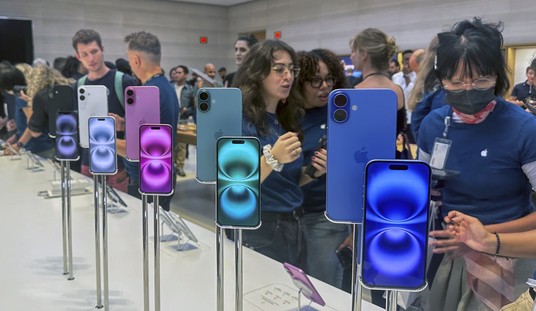We are regularly assured by Democrats and most of the legacy media that crime rates are falling thanks to the wonderful policies and leadership of the Biden/Harris administration, despite what your lying eyes may be telling you. To be clear, it's true that some crime rates, particularly involving certain violent crimes have been decreasing in some places from the ludicrous highs that were observed during Biden's first two years in office. That is good news to be sure, and these days we should take whatever good news we manage to come across when we find it. But that trend is not true across the board when it comes to crime statistics. Some categories of crime are not only not receding, but they are continuing to increase. The worst among those is retail theft in general and shoplifting in particular. Shoplifting reports have soared 24 percent thus far in 2024 and as Just the News reports this week, there is no end in sight for this worrisome trend.
Shoplifting has soared in the U.S. in 2024, forcing many stores to leave cities and continuing a trend in recent years.
Shoplifting has risen 24% in the first half of 2024 alone, according to newly released data from the Council on Criminal Justice.
The White House cited the CCJ’s data to boast a drop in violent crime so far this year, but a closer look at the data showed that while violent crime has declined, shoplifting continues to rise. CCJ studied 23 U.S. cities.
Shoplifting has become a major problem in cities around the country, with some store owners announcing they had to close up shop because of the increased theft.
One analyst who took part in the study attributed the spike in recent years to the huge jump in retail theft seen during the BLM riots in the summer of 2020. The crime rates went up in that regard, but they really never fully subsided even after the riots mostly ended. That wasn't the only factor, of course. While the numbers are impossible to pin down and draw a definite causal connection, retail theft increased steadily everywhere that illegal migrants showed up and settled down in mass numbers, as well as in places where large, seemingly permanent homeless camps were erected.
The study further notes the undeniable impact that shoplifting and looting have had on national retail chains. CVS, Macy’s, Target, and Walmart are all listed among the chains that have shuttered long-standing stores, almost entirely in urban areas. They have all cited shoplifting and looting among the reasons for the closures, along with increasing safety and security concerns for their employees and customers. These closures don't simply affect the business' bottom line. They remove shopping options from communities, forcing people to commute further for the things they need and have fewer shopping options.
There is a significant bit of irony in this report when it comes to the reasons offered by people who have been caught shoplifting. It is noted that massive shoplifting and retail theft have forced stores to raise some of their prices an average of 20% since Joe Biden took office. However, a majority of the shoplifters claim that higher prices are the reason they are exercising a "five-finger discount." They can't afford all of the things they need. That may be true for some, but not for the ones who come and load up carts or boxes with the more expensive items that can be easily fenced on the street at a discount.
One factor not addressed in this report is the trend, particularly in blue states, to decriminalize crimes such as shoplifting or looting unless the total value of the stolen goods exceeds a given, significantly high amount. The looters know that they won't be facing any significant consequences if they are caught, so there is no disincentive to continue stealing. And they won't be caught if employees don't bother attempting to stop them or even call the police, something that happens in many, many cases. California led the way in that trend early on, so it is almost certainly not a coincidence that the highest shoplifting and looting rates were reported on the West Coast. They are also leading the country in the number of retail outlets shutting down and moving elsewhere. Yet none of these blue states seem to be making significant moves to reverse those policies even with the results being so obvious. Nothing about these trends is a mystery or should come as any sort of surprise. But without reversing course, we won't be seeing an end to all of this any time soon.








